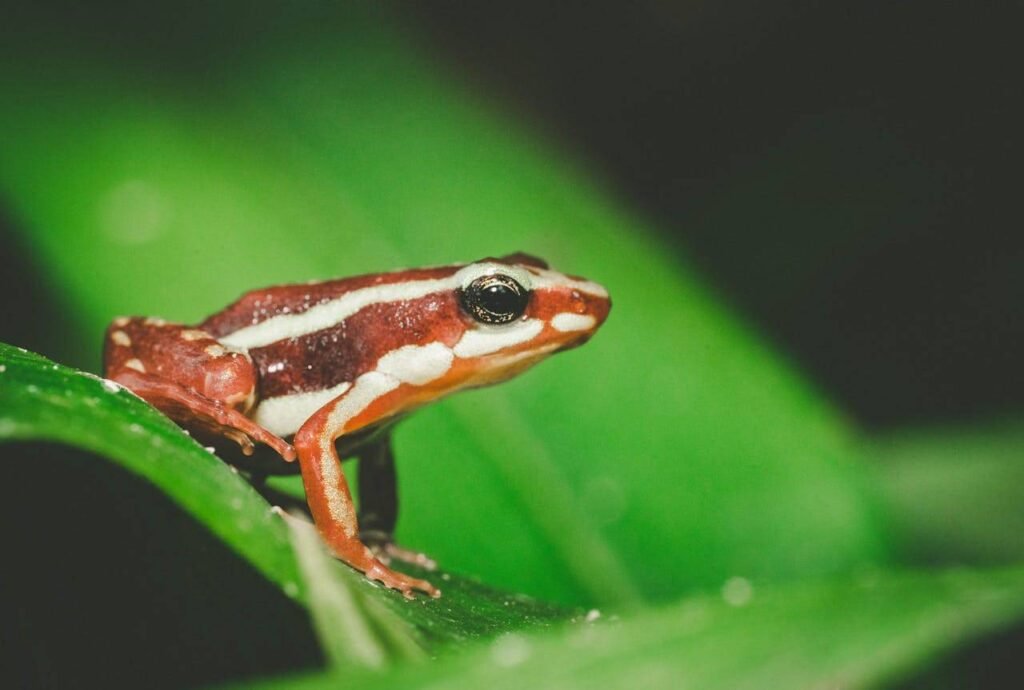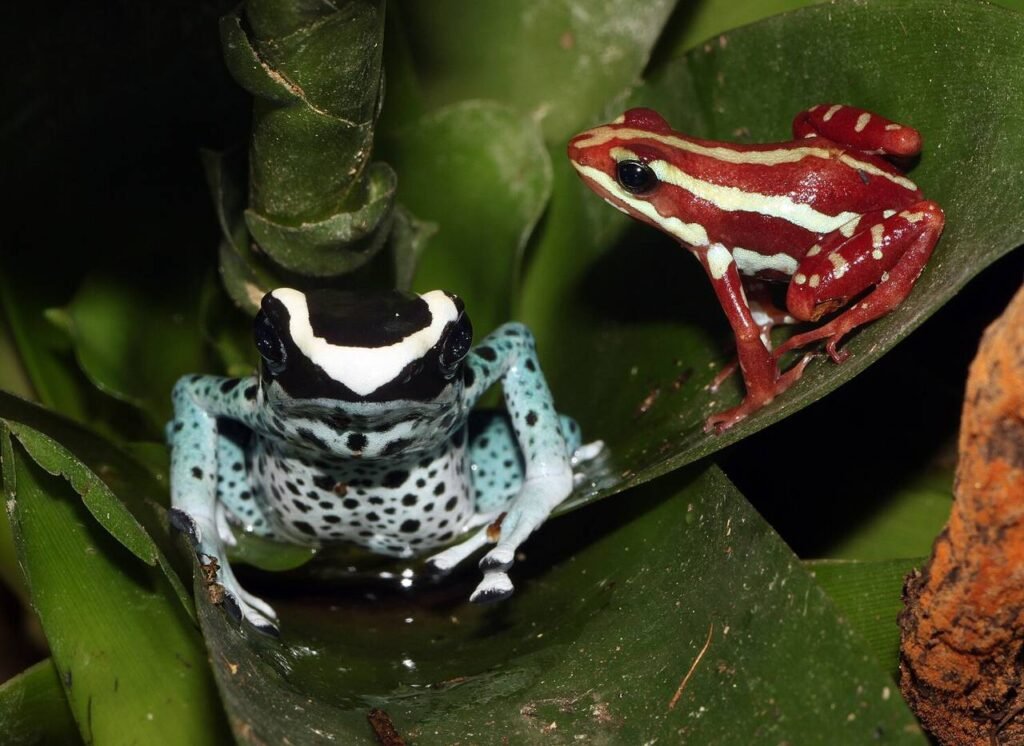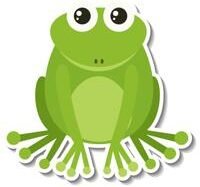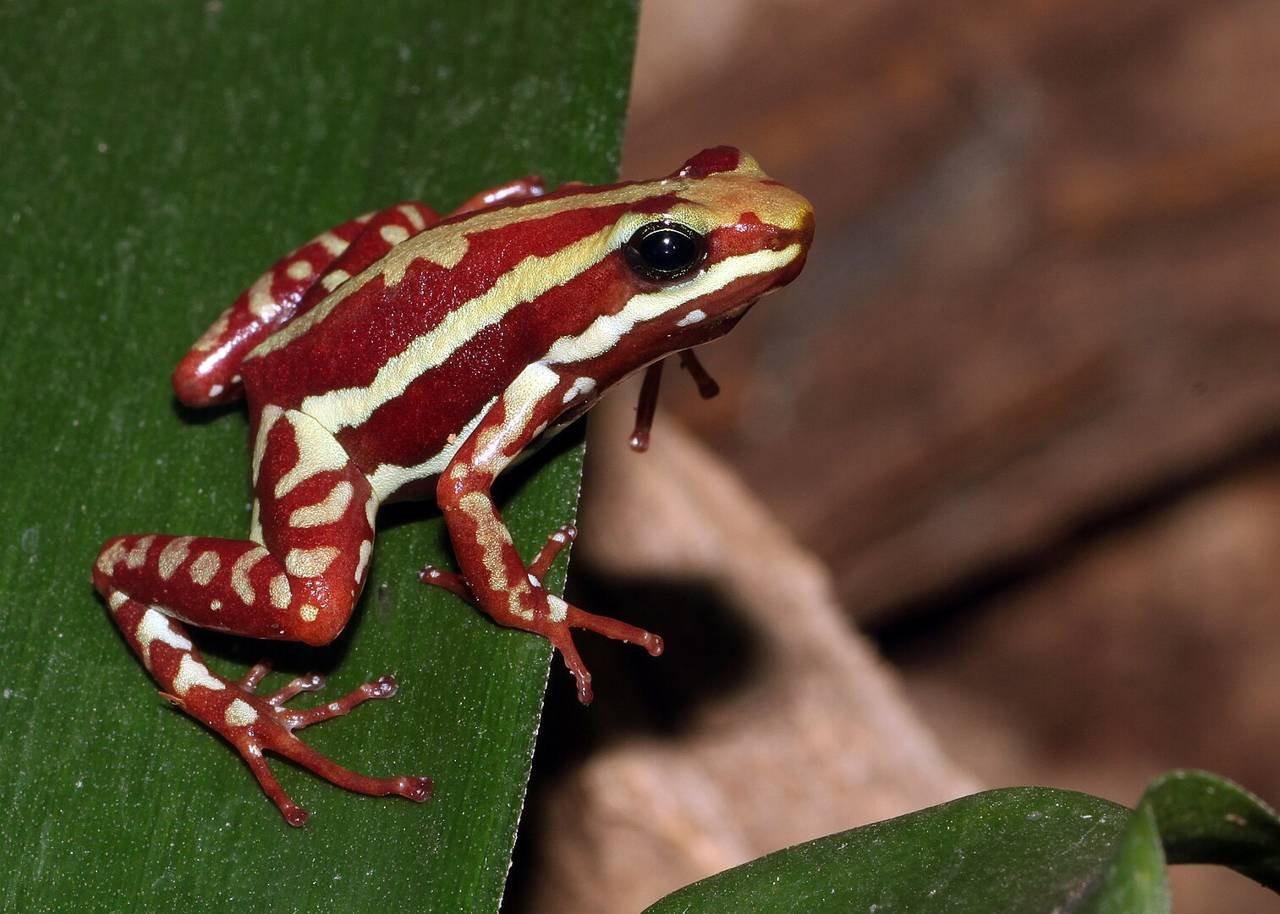The Phantasmal Poison Frog, scientifically known as Epipedobates tricolor, is a stunning yet highly toxic amphibian known for its brilliant colors and petite size. Native to the rainforests of Ecuador, this frog is not only a visual spectacle but also an essential part of its ecosystem. Let’s explore the intriguing nature of the Phantasmal Poison Frog and its unique place in the natural world.
Characteristics and Appearance
The Phantasmal Poison Frog is small, typically only about 0.6 to 0.8 inches in length, but it packs a punch with its vivid coloration. Its body is adorned with a striking combination of bright red, orange, and green stripes, serving as a warning to potential predators of its toxic nature. This aposematic coloring is a hallmark of many poisonous species in the animal kingdom.

Habitat and Distribution
This species is endemic to the subtropical and tropical forests of central Ecuador. It thrives in humid environments with lush vegetation and close proximity to streams and rivers. The dense foliage and moist conditions of these forests provide ideal living conditions and support their diverse diet.
Toxicity and Diet
The Phantasmal Poison Frog is renowned for its production of potent toxins, specifically epibatidine, which is more toxic than morphine but has analgesic properties that have interested medical researchers. The frog’s toxicity is derived from its diet of alkaloid-rich insects, such as ants and termites, found in its natural habitat.
Reproduction and Lifecycle
Phantasmal Poison Frogs engage in intricate breeding behaviors. During the rainy season, males establish territories and produce calls to attract females. Females lay their eggs in moist environments, and once hatched, the males transport the tadpoles on their backs to water bodies, providing a safe environment for them to develop.

Phantasmal poison frog with a dyeing poison dart frog.
Conservation Status
While the Phantasmal Poison Frog is a species of concern due to habitat loss and environmental degradation, efforts are underway to protect its natural habitat in Ecuador. Umbrella conservation strategies, such as preserving large rainforest tracts and regulating land use, are crucial for maintaining healthy populations.
FAQs About Phantasmal Poison Frogs
What makes the Phantasmal Poison Frog toxic?
This frog produces toxins like epibatidine, obtained from its diet of alkaloid-rich insects, which serve as a potent defense mechanism against predators.
Is the Phantasmal Poison Frog dangerous to humans? While the toxins are potent, the frogs do not pose a risk unless ingested or if toxins come into contact with open wounds. They should be handled with care.
Can Phantasmal Poison Frogs be kept as pets? It’s possible to keep them as pets, but it is essential to source them from reputable breeders to ensure they are captive-bred and non-toxic due to the lack of wild diet.
What is Phantasmal Poison Frogs natural habitat preference?
They reside in humid, subtropical forests with abundant vegetation near water sources, which support their dietary and reproductive needs.
What conservation efforts exist for these frogs? Conservation efforts focus on habitat preservation, sustainable rainforest management, and supporting captive breeding programs to alleviate the pressure on wild populations.
Conclusion
The Phantasmal Poison Frog, with its vivid colors and ecological significance, embodies the delicate balance of nature in Ecuador’s rainforests. Understanding and conserving these amphibians is vital to preserving their ecosystems. For more insights into other captivating poison dart frogs, explore our articles on Golden Poison Frog, Strawberry Poison-Dart Frog, and Blue Poison Dart Frog. For entertainment, enjoy our frog jokes and frog-themed stories, showcasing the enchanting world of frogs beyond biology.
Photos By Holger Krisp – Own work, CC BY 3.0, Link By Holger Krisp – Own work, CC BY 3.0, Link Image: Jonas Thomann
